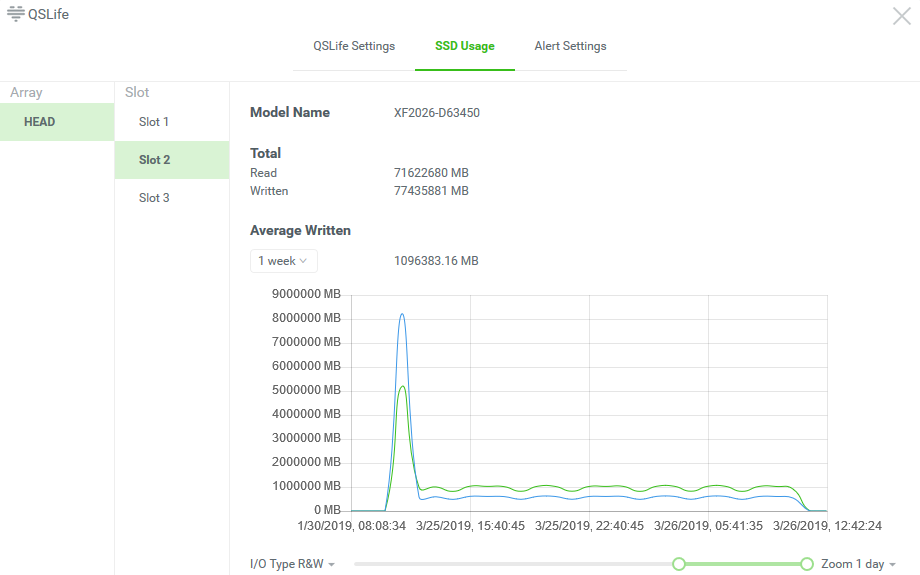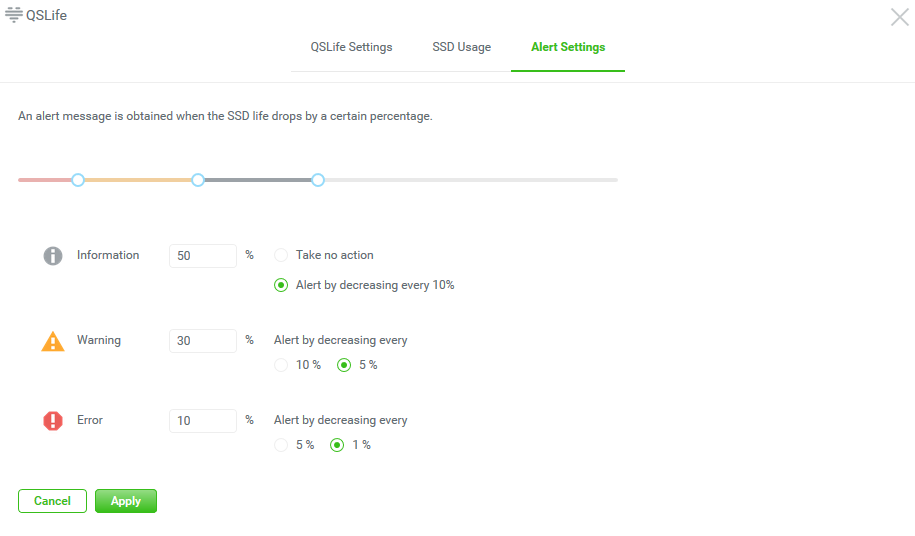Monitoring SSD Status in Qsan Arrays
The use of solid-state drives in the field of data storage will not surprise anyone. SSDs are well-established in IT equipment from personal computers and laptops to servers and storage systems. During this time, several generations of SSDs have changed, each of which has improved characteristics in terms of performance, reliability and maximum capacity. But the issue of monitoring the SSD write resource is still relevant.

SSDs, by virtue of their physical structure, have a predetermined recording resource. And the fact that much more data is actually written to the SSD than is sent to it by the host (especially as part of a RAID group) brings us even closer to the indicated limit. This fact is a kind of fear among some users before using SSD.
In fact, not everything is so bad. The estimated DWPD life is given for the entire warranty period of the drive (usually 3-5 years). And because the real resource of recording TBW will be very impressive, which allows you not to be afraid to "wipe" the SSD in just a few months. Moreover, in some cases it is possible to temporarily use drives in a more intensive mode than is provided by the manufacturer, precisely due to high TBW values. However, all this does not at all eliminate the need to monitor the current recording resource of each specific SSD with the goal of proactive replacement when certain thresholds are reached.
Each storage vendor implements this functionality in its own way. But more often than not, this is simply a property of the drive that is healthy / faulty. Qsan in its All Flash systems , on the contrary, made a complete visualization of the parameters of the current SSD activity in the form of a separate module called QSLife. This module is an integral part of the new XEVO operating system , under which all Qsan storage systems will operate in the future.
For each SSD in the system, the current “standard of living” is displayed in the most accessible form. It's no secret that all modern SSDs keep their own records of the blocks written to them. Based on these values, the system calculates the rate of wear of the drive in accordance with its markup. The final result is displayed as a percentage of the brand new SSD. We also note that the degree of wear is calculated not only for the period of time during which the drive worked as part of the All Flash Qsan array, but for its entire life, including work as part of other systems (if any).

In addition to simplified drive information, you can find out some more details. In particular, the amount of data recorded on it over its entire service life. And for the time that the drive worked as part of the All Flash Qsan array , its work schedules in read and write operations are available. Statistics are collected in real time and are available for any period with a viewing depth of up to one year.

Of course, the purpose of this functionality is not only to build beautiful schedules to the delight of the administrator, but also to proactively analyze the state of the drives and prevent potential problems in the future associated with their wear. Therefore, in relation to the "standard of living" of the SSD, you can set a lot of thresholds and corresponding actions related to the exhaustion of the SSD recording resource.

If you look at other storage models (not specialized All Flash, but general purpose) from Qsan , then they do not have such a visualized report on drives. It is understandable: nevertheless, the flagship must somehow be different from mainstream. However, in the regular product line, such monitoring is always carried out. Yes, without collecting statistics on usage and performance. But the main function of tracking the recording resource is present.

Due to the continuous improvement of solid-state drive manufacturing technologies, the question of their reliability has somewhat subsided. But, nevertheless, monitoring the resource of their recording is still relevant. Such properly configured monitoring will allow the administrator to predict the aging of the SSD in advance in accordance with the actual current loads, and the company management to calculate the TCO indicators (total cost of ownership).
